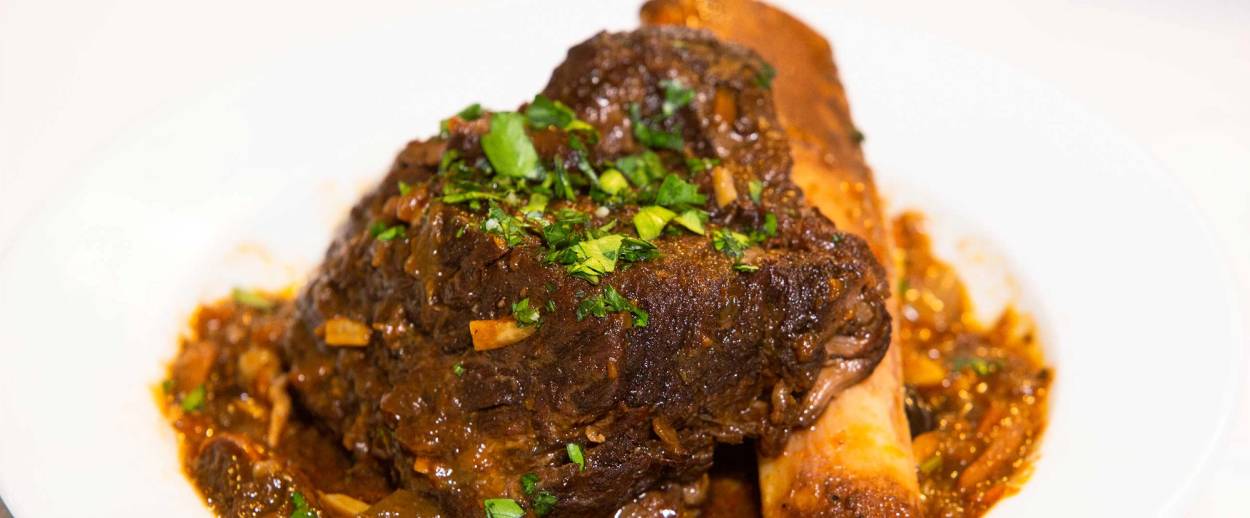Short Ribs Are Back
This lowly cut of beef, once popular for Jewish holiday meals in Eastern Europe, takes on the flavors of Morocco




In the “old country,” when people wanted something special for Friday night or holidays, they braised flanken, what many of us now call short ribs. They had no “brisket” as we know it—what we call brisket, now a staple for Jewish holiday meals, is an American cut of beef. In Europe, their cut was smaller, cheaper, fattier, and less uniform as it was difficult to saw around the bones.
Short ribs have now become trendy in this country. In this age of innovation, the next generation of cooks has dressed up this lowly cut. Short ribs are very tasty, especially if they are slowly braised. Traditional cooks made them tastier with lots of onion and garlic, and maybe some carrots, celery, potatoes, or tomatoes.
Tony Maws, chef at Craigie on Main in Cambridge, Massachusetts, grew up with a Sephardic grandmother who added more spice to her short ribs. Maws has taken her lead in his absolutely delicious rendition, including many of the traditional flavors to give it depth. Yet his additional spices make it cutting edge, with star anise, cinnamon, cloves, coriander, ginger, and the toasted almonds and prunes often added to Moroccan meat dishes.
Joan Nathan is Tablet Magazine’s food columnist and the author of 10 cookbooks including King Solomon’s Table: a Culinary Exploration of Jewish Cooking from Around the World.